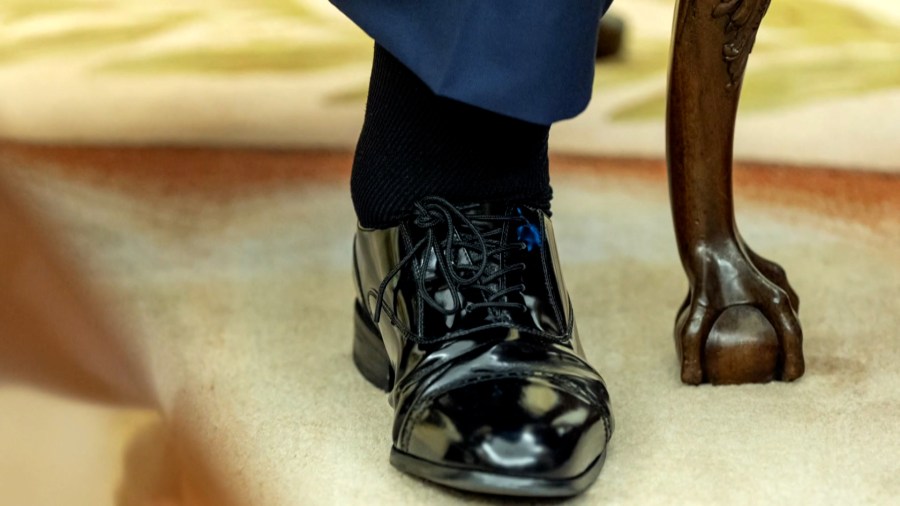President Trump’s Health Update: Understanding Chronic Venous Insufficiency
Recent attention has been drawn to the health of former President Donald Trump following observations of swollen ankles and a bruise on his hand. These concerns came to light after images from the FIFA Club World Cup on July 13 showed him seated with visibly swollen ankles. Additionally, there were reports of what appeared to be bruising on his right hand, possibly covered by makeup.
On July 17, Karoline Leavitt, the press secretary, confirmed that the president has chronic venous insufficiency (CVI), a condition that is considered benign and age-related. This vein condition affects blood flow in the legs and is common among individuals over the age of 70.
The initial concern about Trump’s health began when he was seen with swollen ankles, prompting an evaluation by the White House Medical Unit. Leavitt stated that the president wanted transparency and shared a note from his physician, Dr. Sean Barbabella. The tests conducted included ultrasounds of both legs to assess the condition further.
Dr. Barbabella’s memo confirmed the diagnosis of chronic venous insufficiency, emphasizing that it is a “benign and common condition.” The report also noted that there was no evidence of deep vein thrombosis, arterial disease, heart failure, or other serious conditions. An echocardiogram showed normal heart function, and previous assessments, including a full exam in April, described Trump as being in “excellent health.”
What is Chronic Venous Insufficiency?
Chronic venous insufficiency may sound concerning, but it is a mild condition related to weakened valves in the leg veins, leading to blood pooling. Symptoms can include swelling, heaviness, or varicose veins, and occasionally discomfort. However, it is not life-threatening and can be managed with lifestyle changes such as compression therapy, regular exercise, and elevating the legs. For more severe cases, minimally invasive procedures can redirect blood through healthy veins.
Experts indicate that CVI affects approximately 40% of adults in North Dakota. It is important to understand that while the condition can cause discomfort, it is manageable and does not pose significant health risks.
Additional Notes on Trump’s Health
Leavitt clarified that the bruise on Trump’s hand was consistent with minor soft tissue irritation from frequent handshaking and the use of aspirin, which is part of his standard cardiovascular prevention regimen. There were no signs of more serious underlying issues.
This update highlights the importance of regular health check-ups and the role of medical professionals in monitoring the health of public figures. While the media often focuses on visible symptoms, it is crucial to consider the broader context of a person’s overall health and the potential for misinterpretation of physical signs.
Conclusion
The recent focus on President Trump’s health underscores the need for accurate information and understanding of medical conditions. Chronic venous insufficiency, though concerning at first glance, is a manageable condition that does not significantly impact daily life. As with any health issue, it is essential to rely on medical professionals for accurate diagnoses and appropriate treatment plans. The transparency provided by the White House Medical Unit helps to inform the public and alleviate unnecessary concerns.






